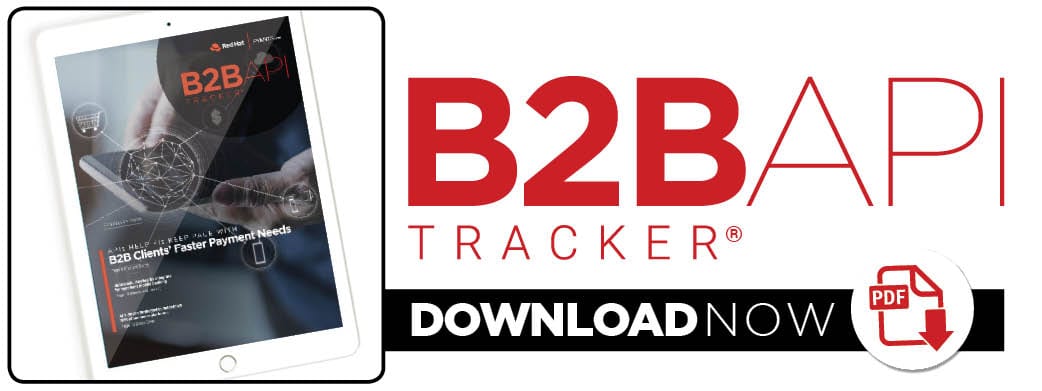Deep Dive: How API-Powered Modernizations Keep B2B eCommerce Platforms Fresh

B2B merchants must make their goods available via digital purchasing channels, or risk missing out on potential sales. Corporate buyers often start their purchasing processes by looking online, according to a 2017 survey — which found that 61 percent began with general online searches, and 56 percent went straight to suppliers’ websites. It is, therefore, vital that these firms create compelling eCommerce platforms.
Simply having an eCommerce presence is not enough, though. B2B sellers need robust platforms that can provide the experiences modern business buyers expect. Merchants’ original systems may no longer have all the capabilities necessary to compete in today’s economy. This is not a rare problem, as 76 percent of B2B executives surveyed in 2017 noted that they needed to update their eCommerce approaches by 2019.
Finding the best ways to upgrade can be tricky. Some merchants opt to completely replace their platforms, while others make steady updates over time — choices that depend on the methods available, and make the most operational sense based on businesses’ strategies and setups. Companies would be wise to implement options that enable easy upgrades as buyers’ needs and demands evolve, and application programming interface (API)-based platforms that support quick integrations could be just the ticket.
The following Deep Dive explores how APIs help B2B merchants to keep their eCommerce platforms current, with minimal disruptions to their existing operations.
All-In-One And Decoupled Systems
Online merchants have traditionally used “monolith” software systems to power their eCommerce operations. Monoliths are comprehensive, centralized platforms that include all the key elements necessary for such business, providing full sets of front- and back-end features like checkout, customer authentication, inventory management and payment authorization. These systems grant merchants many capabilities in one package, making it easy to get up and running online.
Recent API-driven alternatives to monoliths include microservice-based and headless commerce systems, both of which separate businesses’ front- and back-end systems, as opposed to keeping everything on one platform. Headless commerce offerings split up most systems’ aspects, while microservice architectures do so completely.
For example, eTailer Firewire Surfboards used a headless commerce approach, tapping one content management system (CMS) provider for its front-end experiences and a separate Software-as-a-Service (SaaS) provider for its back-end eCommerce system. The company then used a plugin to connect the two offerings.
Headless commerce and microservice infrastructures are distributed systems, composed of individual services connected via API gateways to create cohesive eCommerce experiences. Businesses that use these systems might have different front-end experiences connected to single back-end systems.
No platform can meet all customer and business client needs without regular updates, meaning merchants must think carefully about keeping their systems current. Upgrading can be tricky, though, and the process changes depending on the system.
Managing Platform Updates
Updating monoliths is much different from updating headless and microservice platforms. The same platform controls monoliths’ front-end, customer-facing interfaces and back-end operation engines, which means upgrading these all-in-one systems requires working with underlying code that manages the whole platform — back-end details cannot be updated without also making adjustments to the front. This is sometimes seen as a detriment because it makes modifications slow, difficult and more expensive.
Some online merchants with these comprehensive platforms are finding ways to integrate API-based services to more quickly add new features. They must often deploy new, updated platforms, though, rather than tinker with aspects on the fly, and coding updates must be performed carefully. If vulnerabilities are introduced into one part of the system, they could cause issues for the whole online operation.
Headless commerce and microservice-based platforms are easier to update. They are comprised of many API-based functions connected through servers, meaning businesses can elect to add or remove capabilities as their needs change without disrupting existing services. For example, a merchant could add a new CMS for mobile sales channels without affecting existing website checkout and security capabilities, or integrate order automation and spend management solutions. This adaptability means both systems are ideal for merchants that want to gradually modify their operations without undergoing full platform replacements.
Migrating To API-Based Microservice Or Headless Commerce Platforms
There are limits to how much monolith solutions can be updated, meaning significant eCommerce changes may require firms to switch to entirely new platforms. eTailers with these systems should consider switching to headless commerce or microservice platforms for their flexibility, enabling merchants to make quick adjustments to keep their offerings relevant.
Changing systems without significantly disrupting operations requires careful transition strategies. Merchants should keep their legacy operations running while launching headless platforms and moving functions over to them. They could migrate one aspect at a time — an application, product line or shopping channel, for example — while running legacy platforms, avoiding the passing of frictions to customers and enabling normal sales during the transition.
B2B merchants must decide which updating strategies best suit them. Some eTailers elect to phase out legacy monolith systems, and replace them with API-based offerings. Those with headless commerce or microservice-based platforms may adopt new API integrations to make smaller-scale improvements to their existing setups. Rather than offer a fixed set of eCommerce features, merchants should focus on their sectors’ specific customer experience and operational needs, and leverage setups that will meet and exceed their expectations.
Vendors take many approaches to finding appropriate sales strategies, but one element is not optional: B2B sellers that want to be competitive must be ready to sell online. They must have a robust eCommerce presence — as well as the platforms and API supports that underpin them — to succeed.

